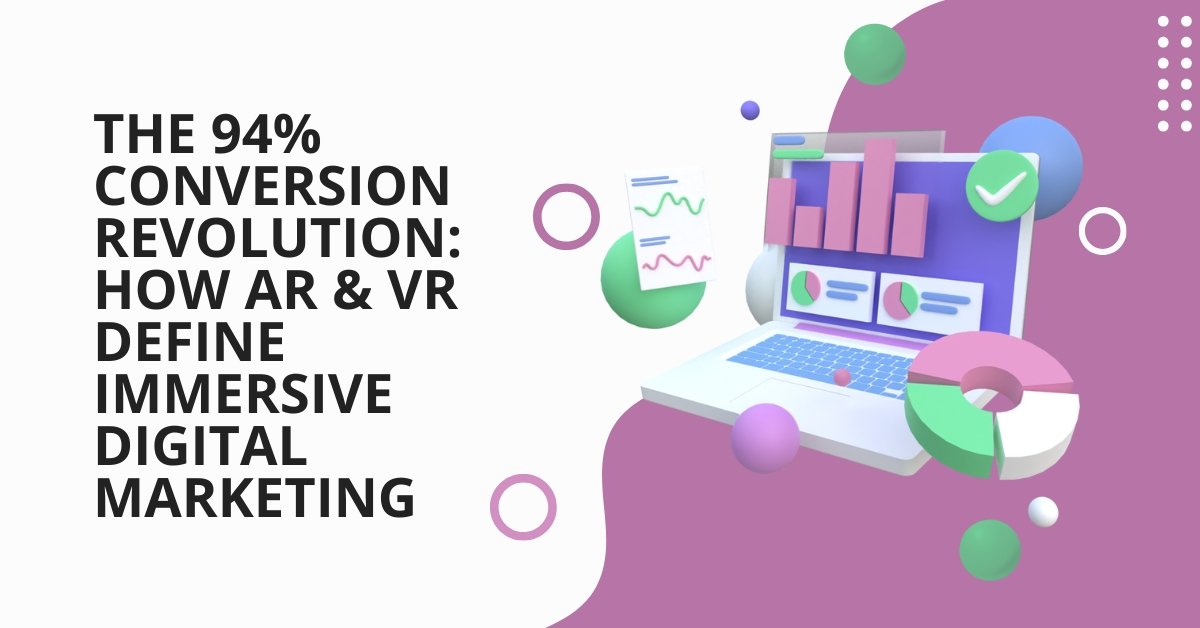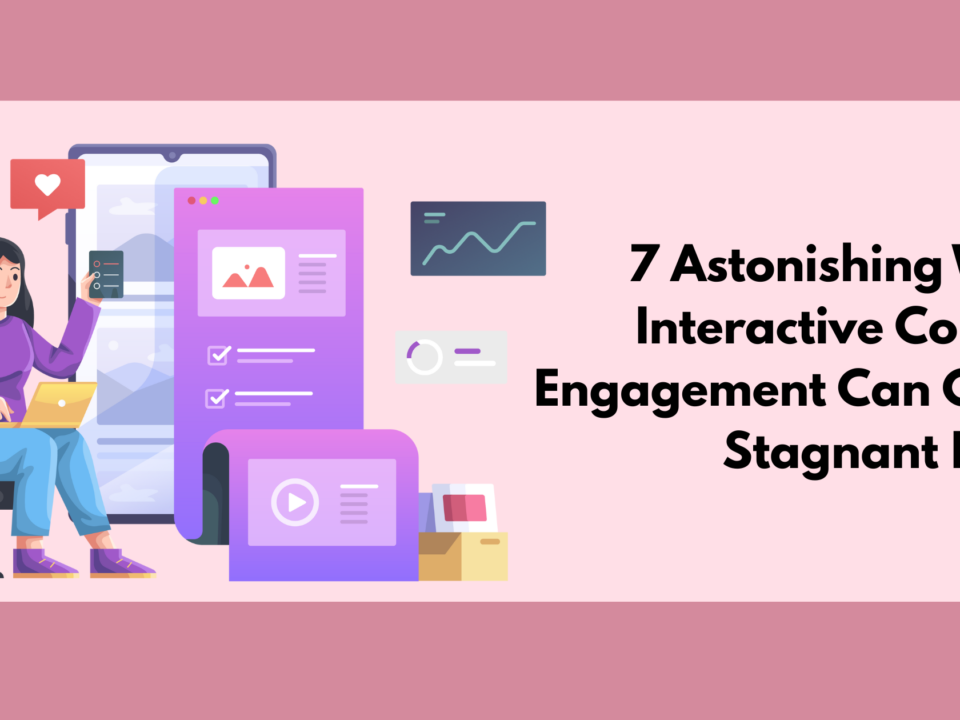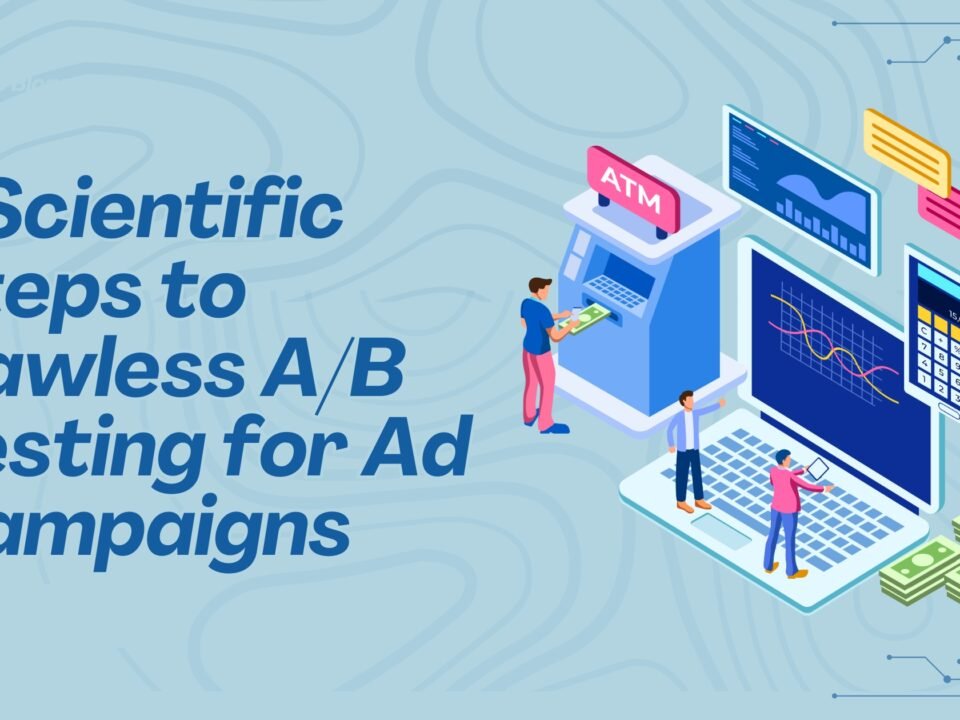
The digital landscape is undergoing a profound transformation. For years, digital marketing relied on static images, compelling videos, and persuasive copy to capture a fleeting moment of a consumer’s attention. Today, that model is obsolete. A new, powerful paradigm has emerged that doesn’t just ask the audience to watch, but to participate. This is the era of Immersive Digital Marketing, and its vanguard is powered by Augmented Reality (AR) and Virtual Reality (VR).
The statistics speak for themselves, signaling a seismic shift in consumer behavior and brand strategy. Products featuring AR/3D content on e-commerce platforms like Shopify are reporting an average of 94% higher conversion rates than those without. This massive number isn’t just a trend; it’s a direct measure of the confidence and engagement that immersion delivers. As the global AR/VR market is projected to exceed $50 billion by 2025, the brands that master these technologies now are not just adapting—they are laying the groundwork for a competitive revolution.
This blog post will explore how AR and VR are fundamentally changing the digital marketing playbook. We’ll delve into the distinct applications of both technologies, examine the real-world case studies driving this change, and ultimately, define how a focus on Immersive Digital Marketing creates a more meaningful, memorable, and profitable connection between brands and their consumers. The future of engaging your audience is not about talking to them; it’s about inviting them in.
AR: The Mobile Gateway to Immersive Digital Marketing
Augmented Reality (AR) is arguably the most accessible and rapidly adopted component of the Immersive Digital Marketing toolkit. Its power lies in its ubiquity: it operates seamlessly on the smartphones millions of consumers already carry. AR overlays digital content—like 3D models, filters, or informational graphics—onto the user’s real-world view, bridging the gap between the physical and digital shopping experiences.
The “Try-Before-You-Buy” Phenomenon
The single most impactful application of AR in digital marketing is its ability to reduce purchase friction and buyer’s remorse.
- Virtual Try-On (VTO): For fashion, cosmetics, and eyewear brands, AR has eliminated the guesswork of online shopping. L’Oréal’s Makeup Genius app, for instance, allows users to virtually apply makeup with hyper-realistic fidelity, instantly seeing how a product looks on their own face. This experiential convenience has been shown to be a major driver of the aforementioned 94% higher conversion rates.
- Product Visualization: Furniture giants like IKEA utilize AR to let customers place true-to-scale 3D models of their products directly into their own homes. This not only gives the customer confidence in fit and style but has also been credited with a significant positive impact on reducing costly product returns. In the real estate sector, AR allows potential buyers to visualize renovations or future furniture layouts within an empty property, turning a static floorplan into a dynamic experience.
Gamification and Social Engagement in Immersive Digital Marketing
AR filters and lenses have made social media platforms a powerful engine for branded, viral content. Companies can design interactive experiences that users willingly share, transforming an advertisement into an act of self-expression.
- Branded Filters: Brands frequently launch custom Snapchat or Instagram filters that allow users to interact with their logo, mascot, or new products. This strategy leverages the consumer’s desire for shareable content, turning every user into an unpaid brand advocate.
- Location-Based AR: The success of games like Pokémon Go demonstrated the power of location-based AR. Retailers can use this technology to create virtual scavenger hunts or unlock exclusive offers when customers are near a physical store, effectively drawing foot traffic from the digital world.
VR: Deep Immersion and Emotional Storytelling
Virtual Reality (VR) offers a completely different value proposition for Immersive Digital Marketing. Unlike AR, which enhances reality, VR completely transports the user into a custom-built, fully digital environment, requiring a headset (like Meta Quest or Apple Vision Pro) for true immersion. While the audience size remains smaller than mobile AR, the depth of engagement and emotional impact is unparalleled.
Virtual Showrooms and Experiential Demonstrations
VR excels at selling experiences, complex products, and high-value items where an emotional connection is paramount.
- Virtual Test Drives and Tours: Automotive brands like Volvo have leveraged VR to offer virtual test drives of new models, allowing customers to experience the car’s features and feel without ever stepping into a dealership. Similarly, travel agencies like Thomas Cook have used VR to allow customers to “Try Before You Fly,” letting them virtually walk through a hotel room or sightsee at a destination, instilling a level of pre-purchase certainty that static photography can’t match.
- Emotional Storytelling: VR is a master tool for non-profit and purpose-driven marketing. Toms Shoes, for example, created a VR experience to take customers on a virtual “Giving Trip” to Peru, where they witnessed firsthand the company’s donation of shoes to children. This powerful, empathetic experience deepened the emotional bond with the brand and reinforced its philanthropic mission. By moving the user to feel and witness the brand’s impact, VR elevates brand awareness into brand loyalty.
The Immersive Future: Integrating AI and Data
The Immersive Digital Marketing revolution isn’t just about the technology itself; it’s about the data it generates and the personalization it enables. AR and VR experiences, especially those that are interactive, collect richer data on user behavior than any traditional digital ad.
- Hyper-Personalization: When a customer uses an AR try-on app, the system collects data on color preferences, sizes tried, and objects viewed. This data allows for hyper-targeted retargeting campaigns and highly personalized product recommendations, dramatically increasing the relevance and effectiveness of future marketing efforts.
- AI-Powered Optimization: Artificial Intelligence (AI) is the engine that will make future AR/VR experiences even smarter. AI can analyze a user’s environment in real-time to offer contextually relevant AR content (e.g., suggesting a specific paint color based on the light and existing furniture in a room). This seamless integration of data and delivery ensures a continuous, positive feedback loop that constantly refines the user experience.
The Essential Takeaway for Immersive Digital Marketing
The shift to Immersive Digital Marketing marks a permanent divergence from passive advertising. Brands are realizing that in a crowded digital world, the most valuable commodity is not attention, but engagement. AR and VR are the tools that provide it.
From the simple, viral appeal of a social AR filter to the profound, empathetic immersion of a VR narrative, these technologies offer an unparalleled opportunity to transform consumer interaction. This is more than a technological fad; it is a fundamental redefinition of the marketing funnel, where visualization leads directly to confidence, and confidence translates into sales.
Don’t wait for the market to catch up. Start exploring how to integrate the power of augmented and virtual reality into your strategy today. Embracing this Immersive Digital Marketing framework is the only way to ensure your brand is not just seen, but truly experienced, capitalizing on that stunning 94% conversion potential and solidifying a leading position in the digital revolution. The future is here—and it’s deeply interactive.




